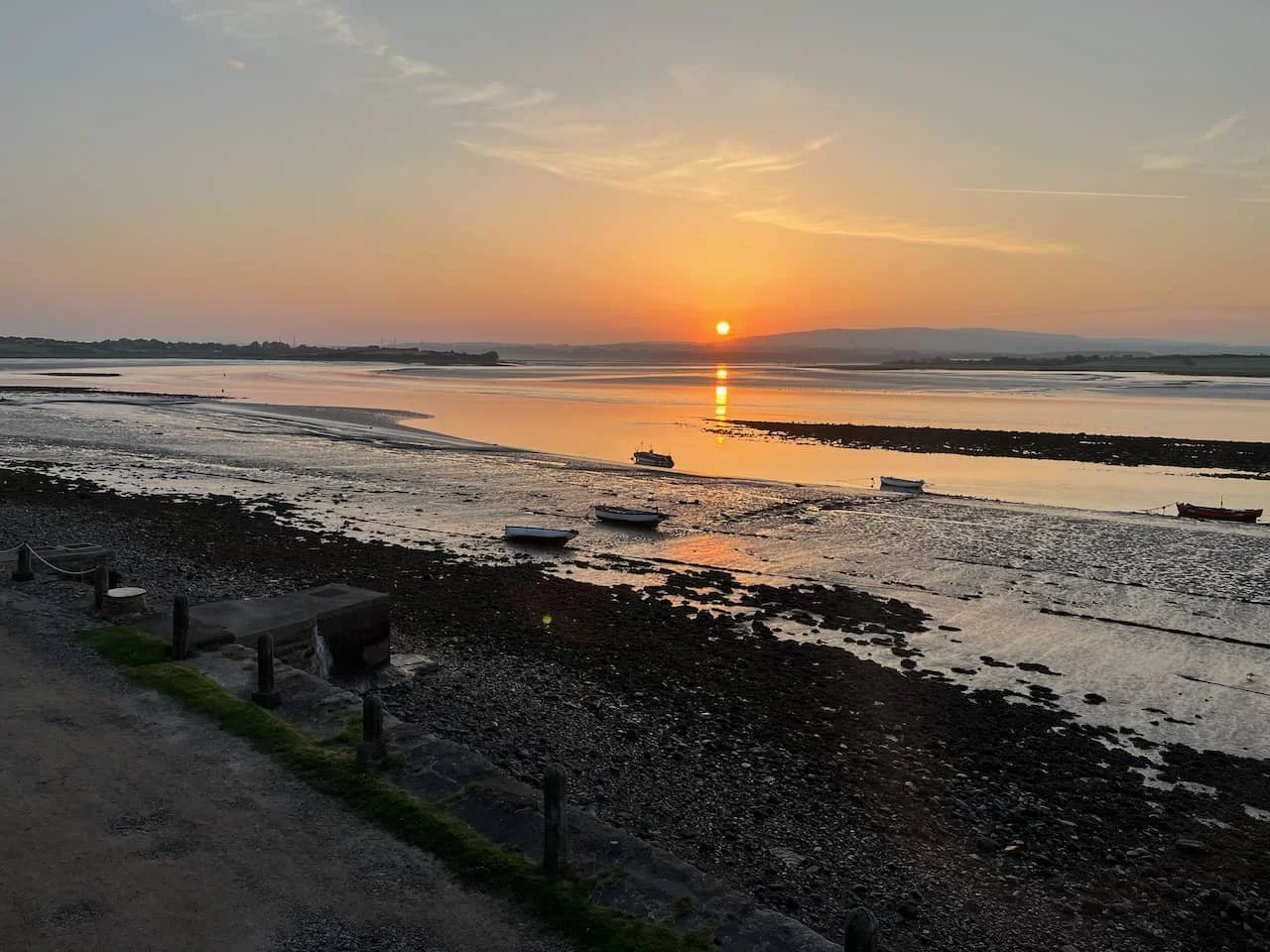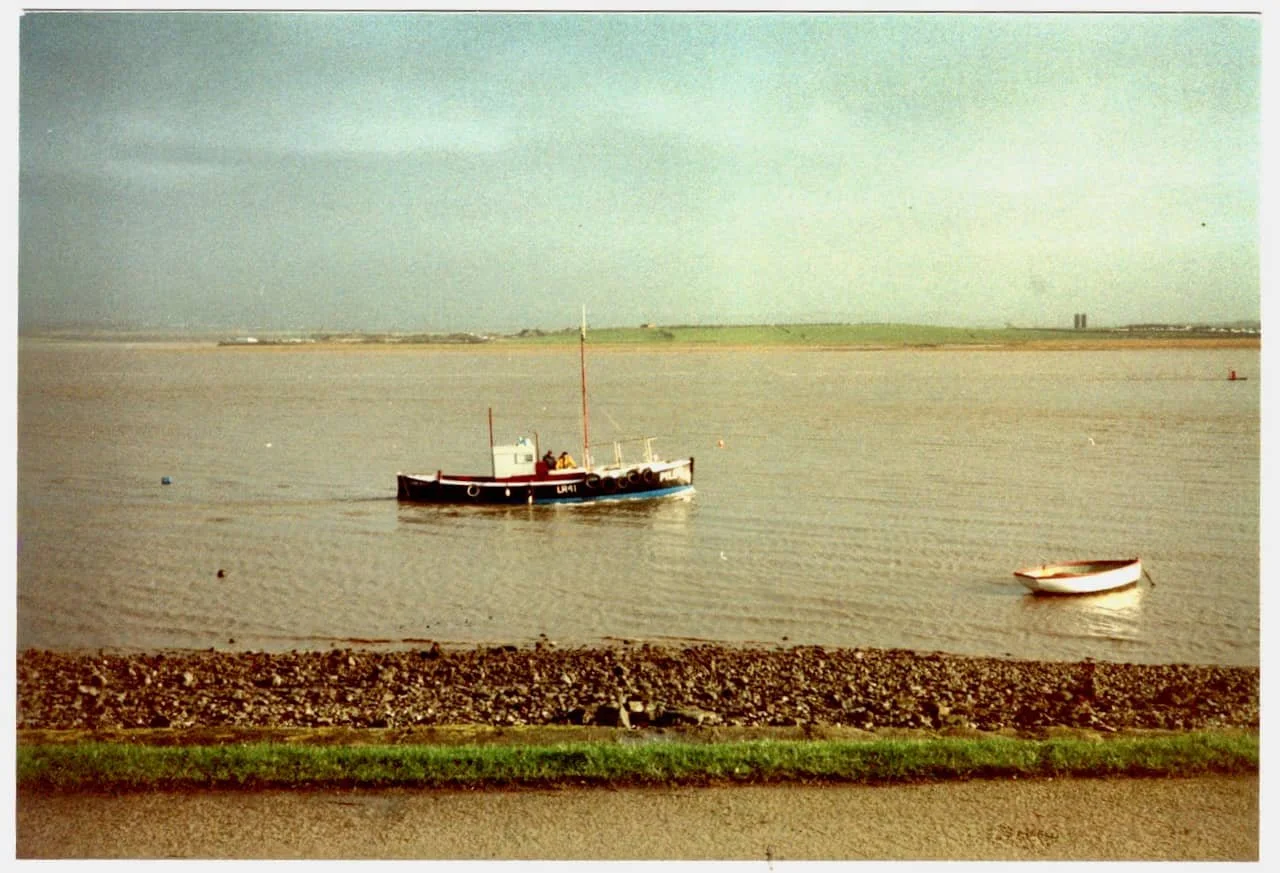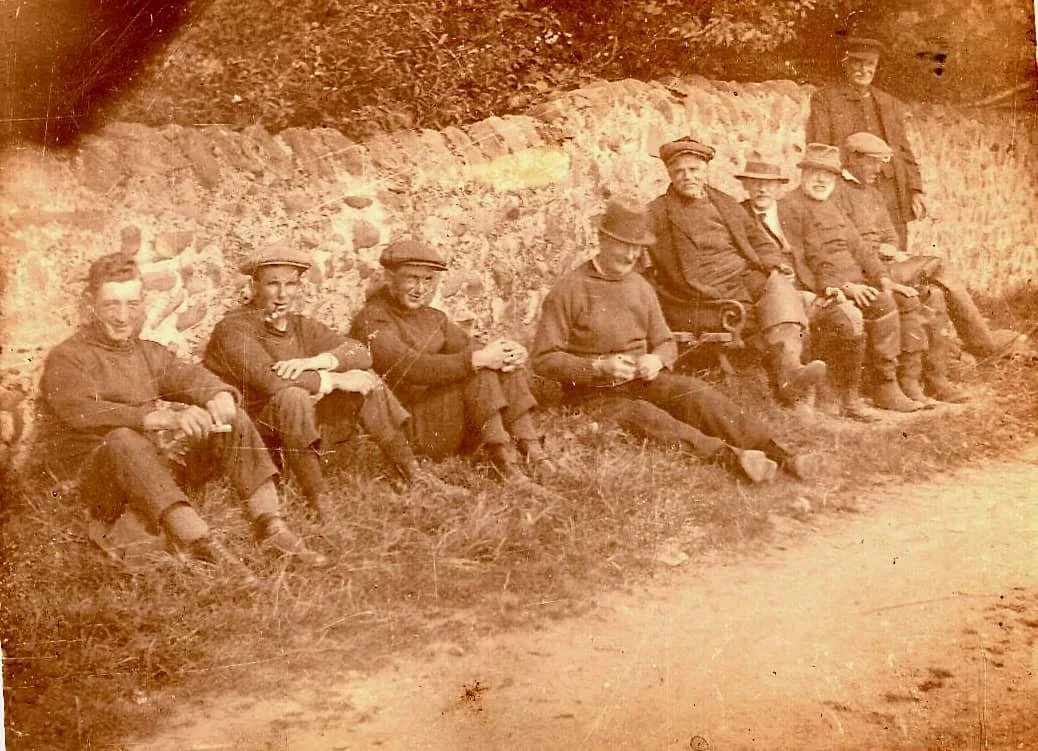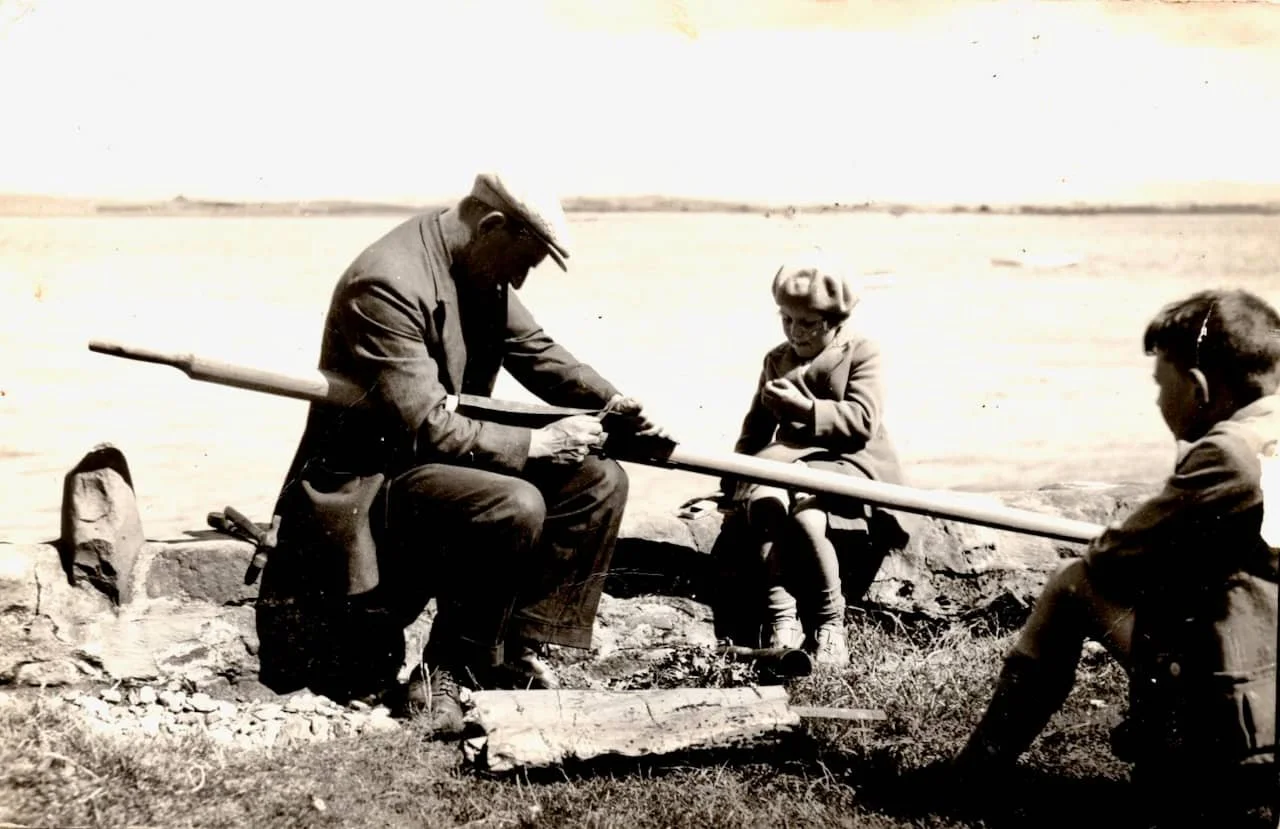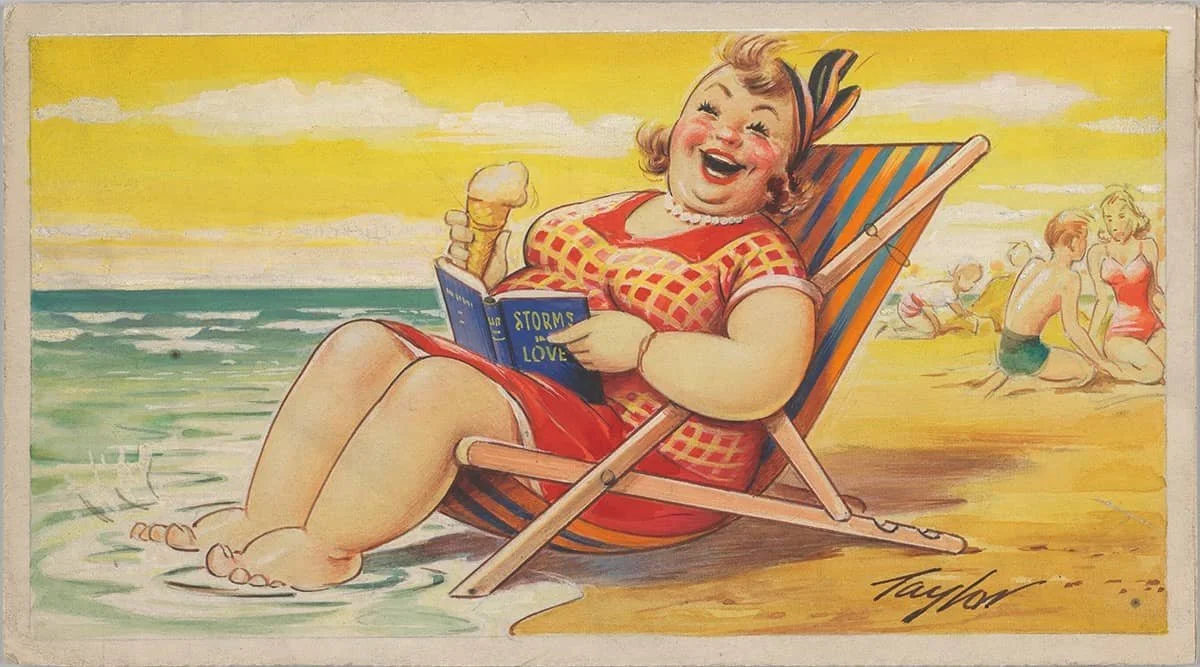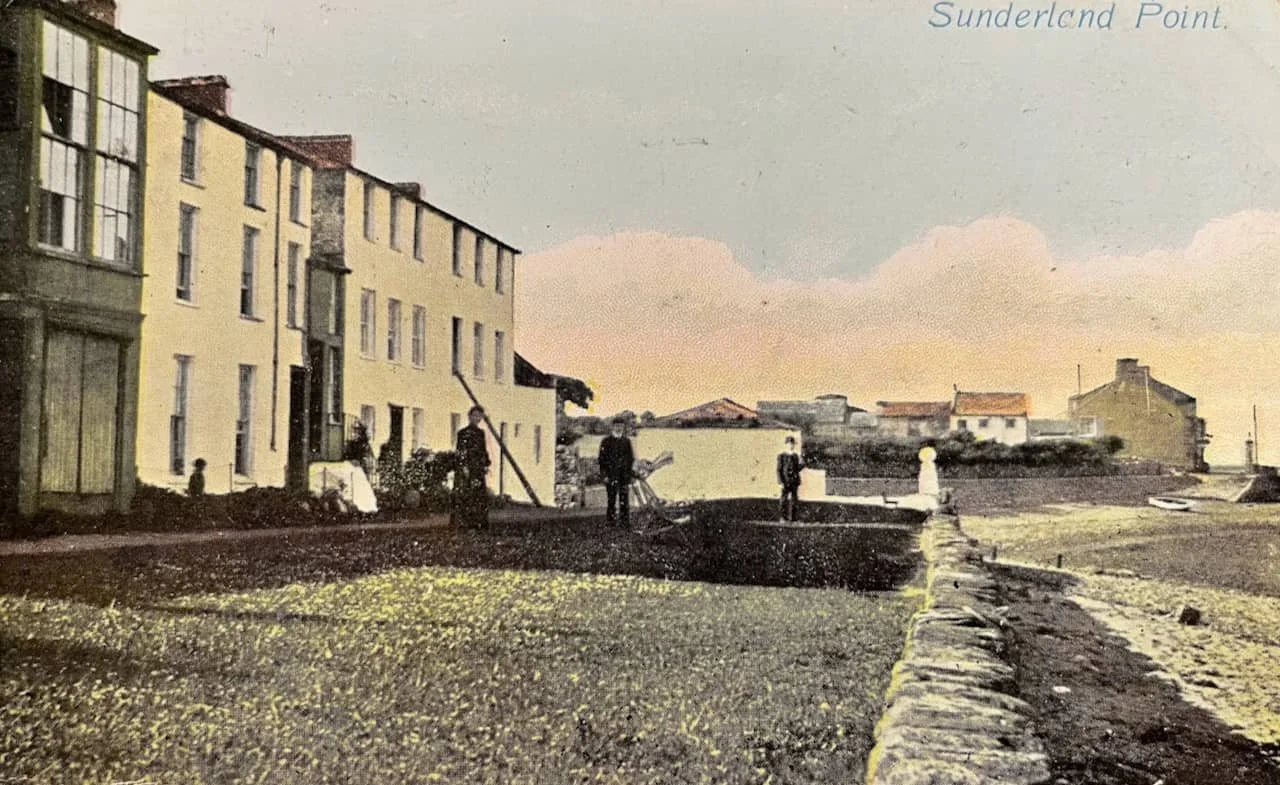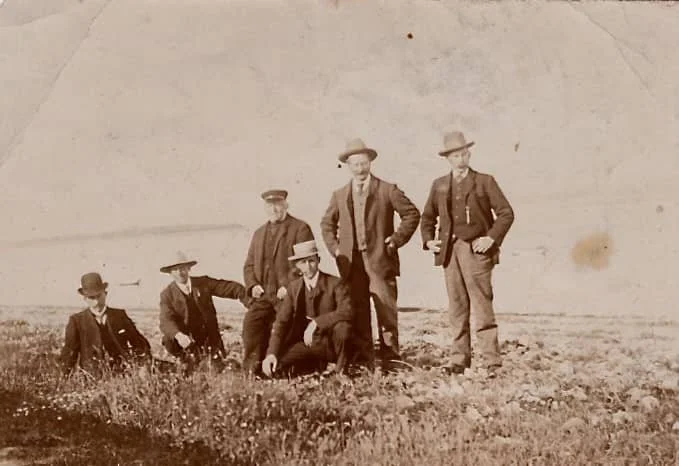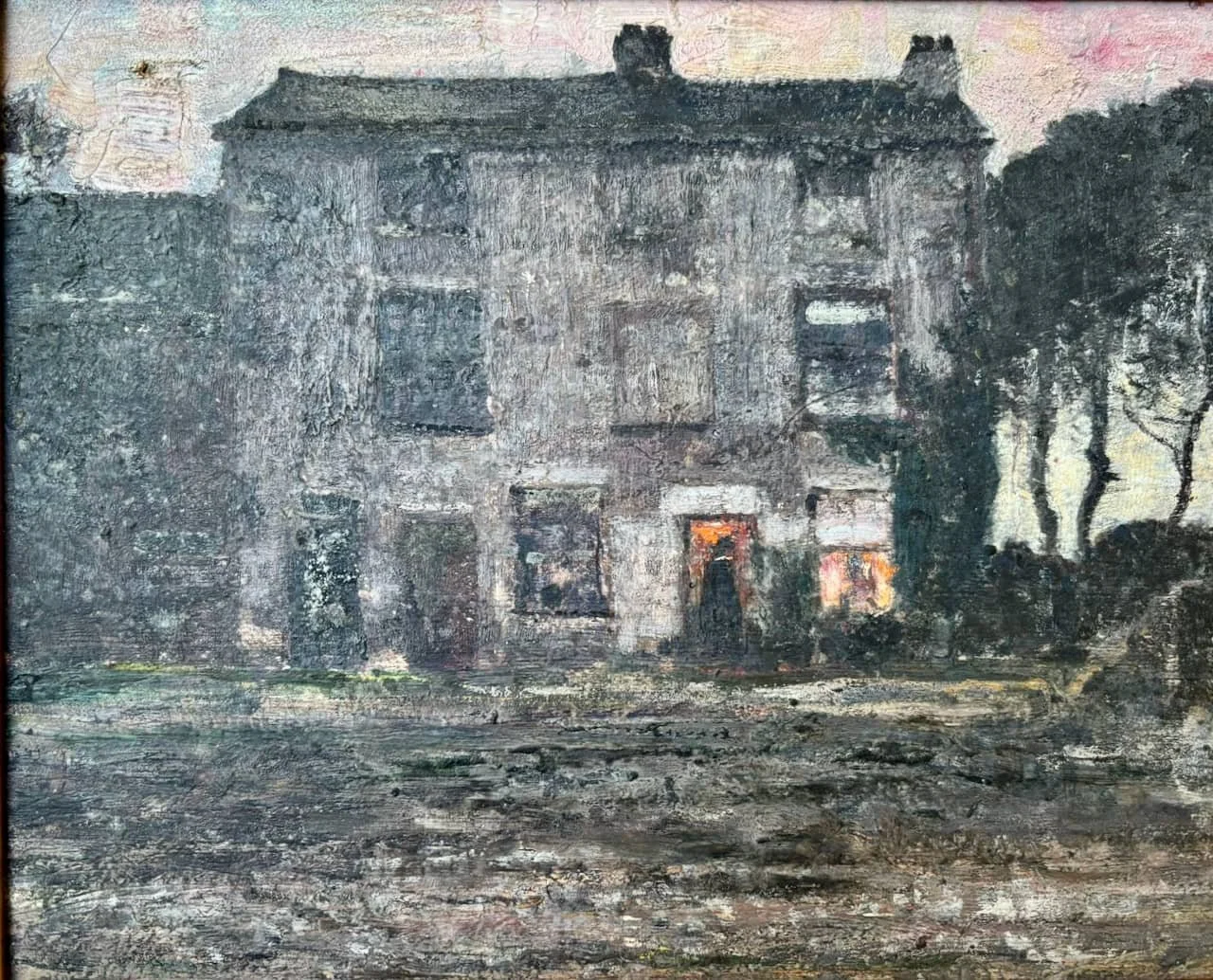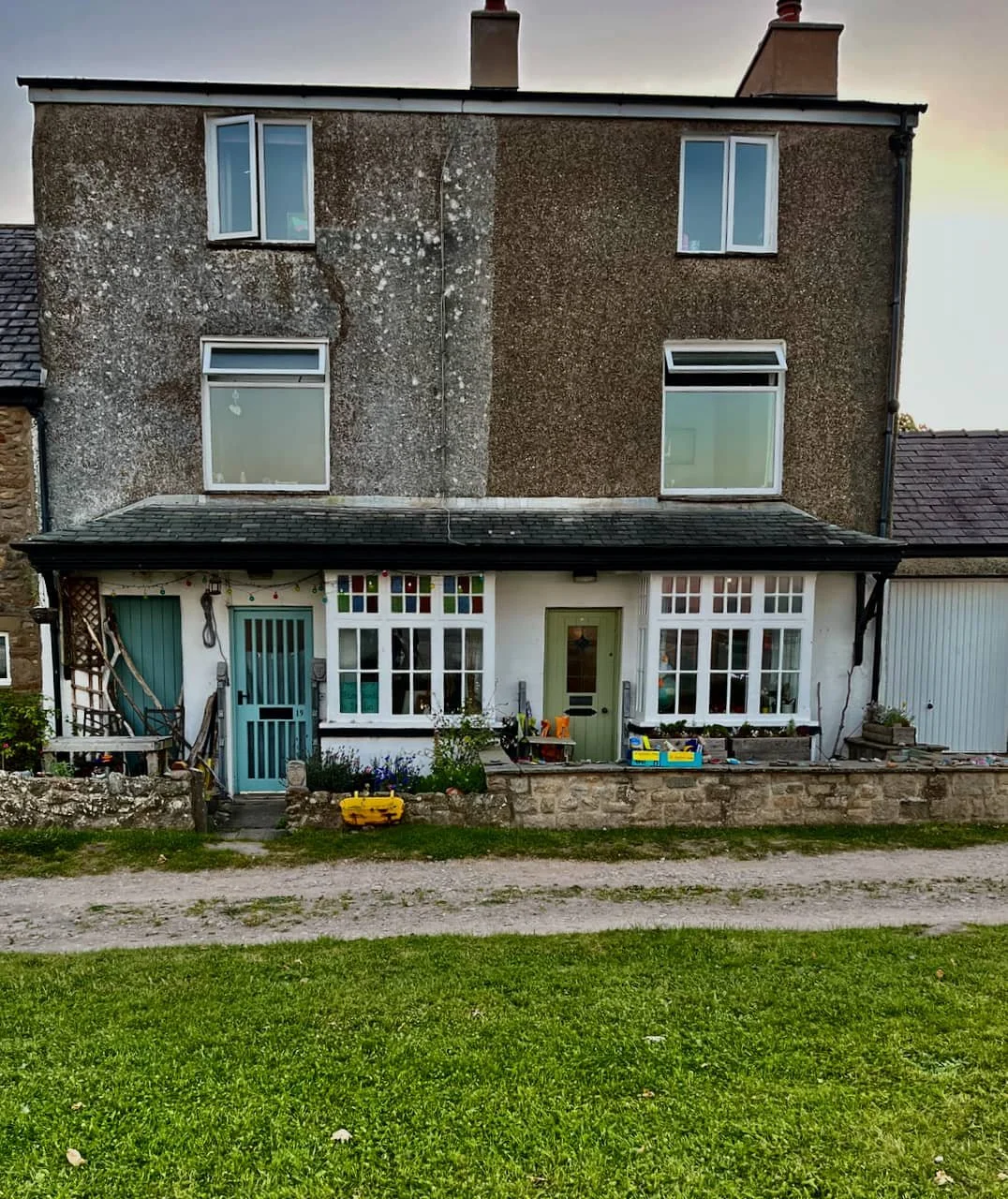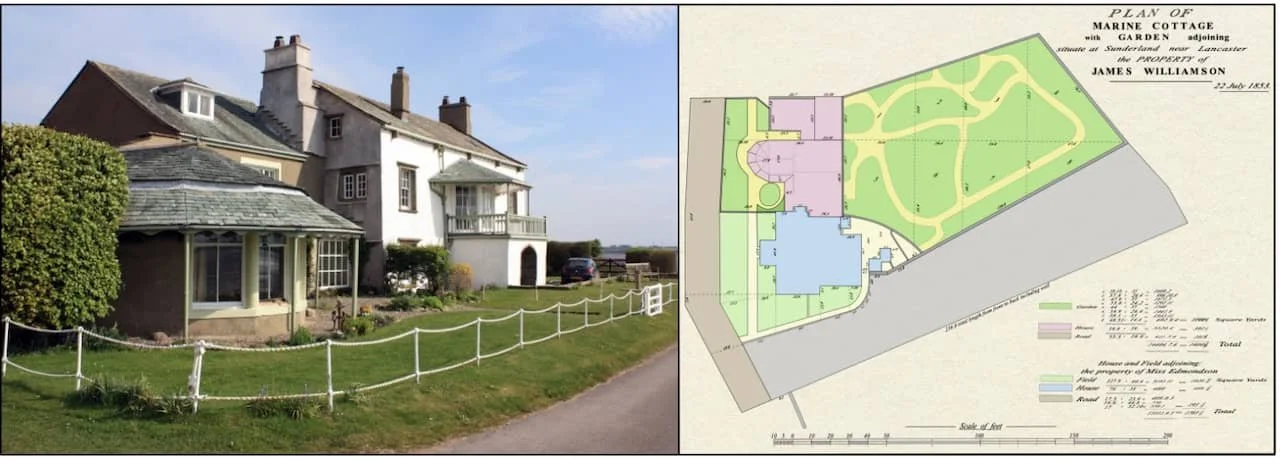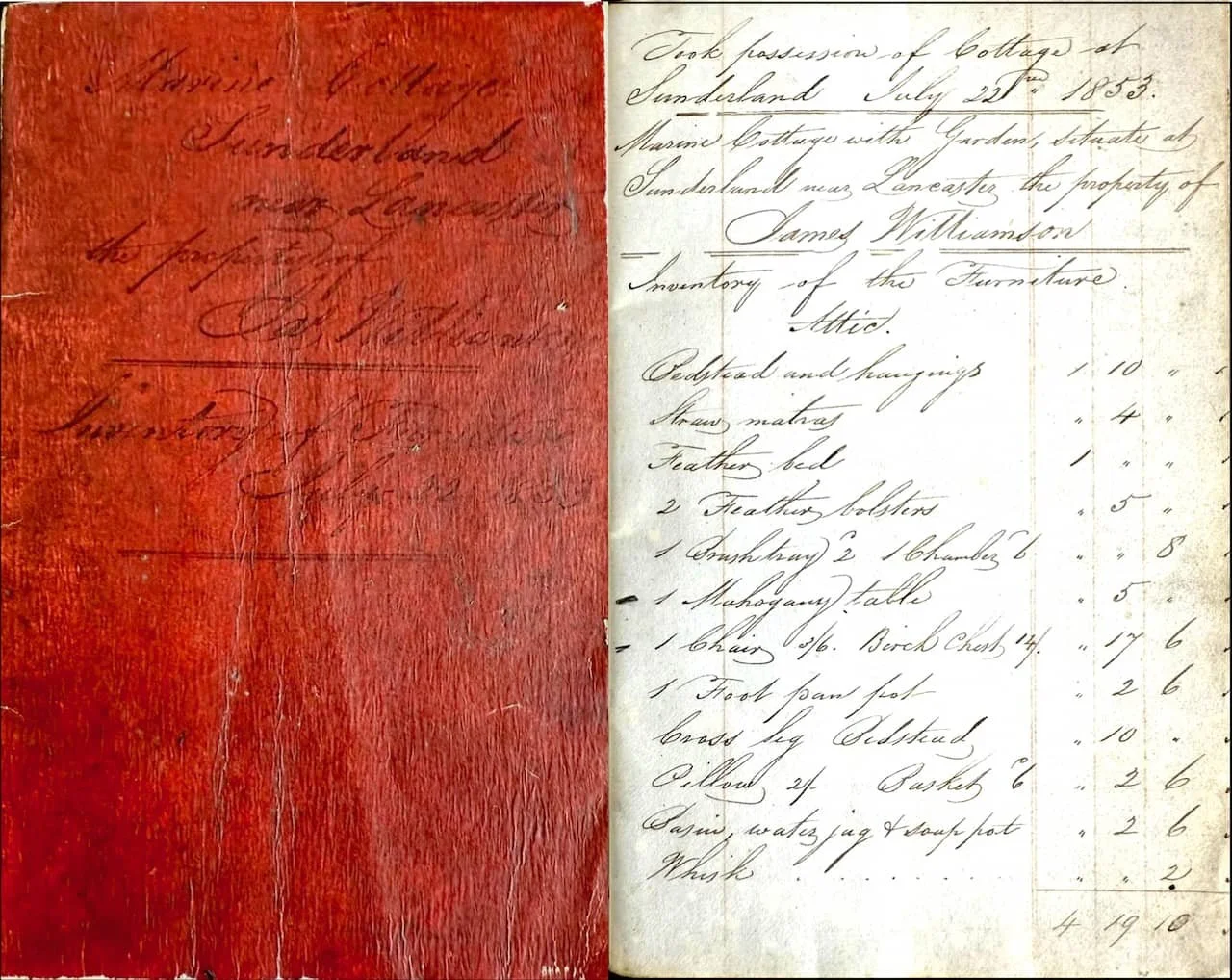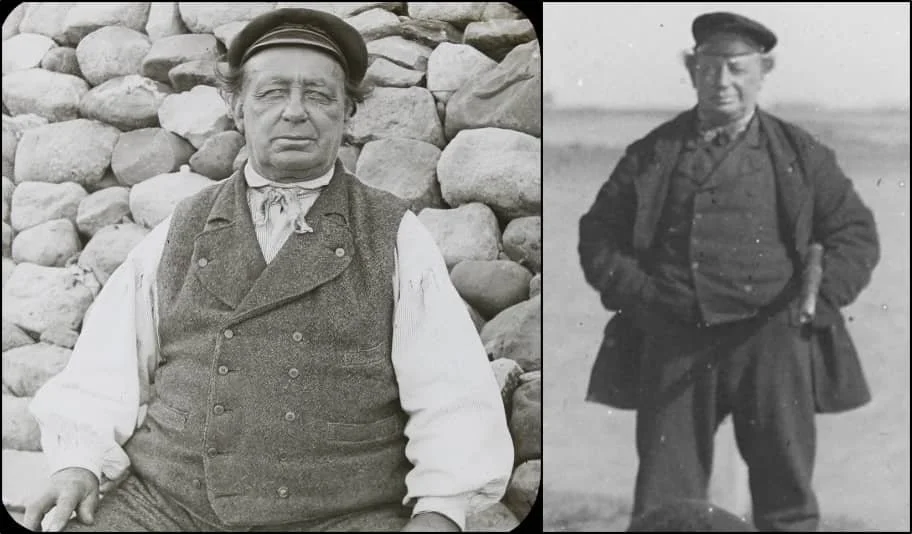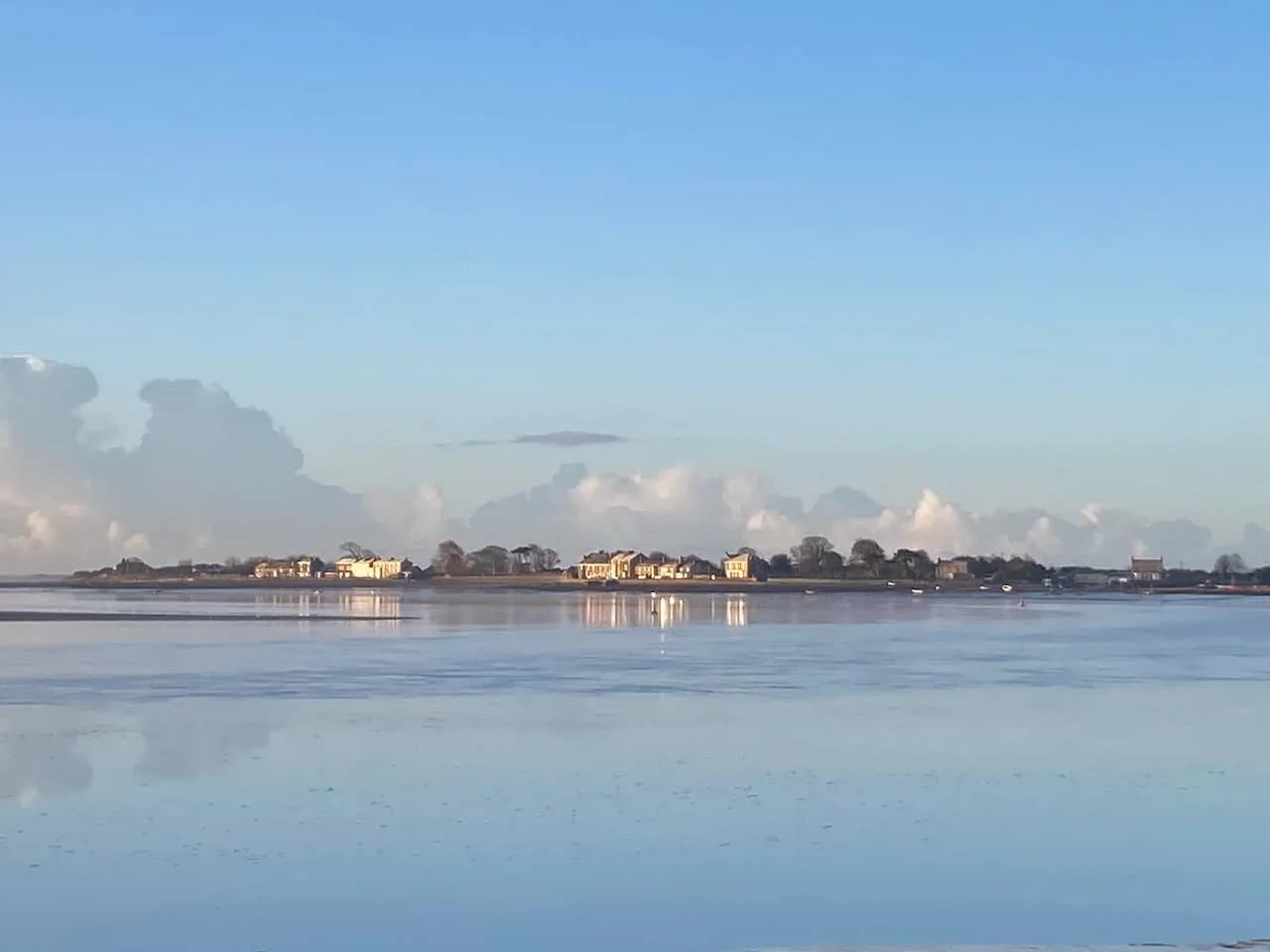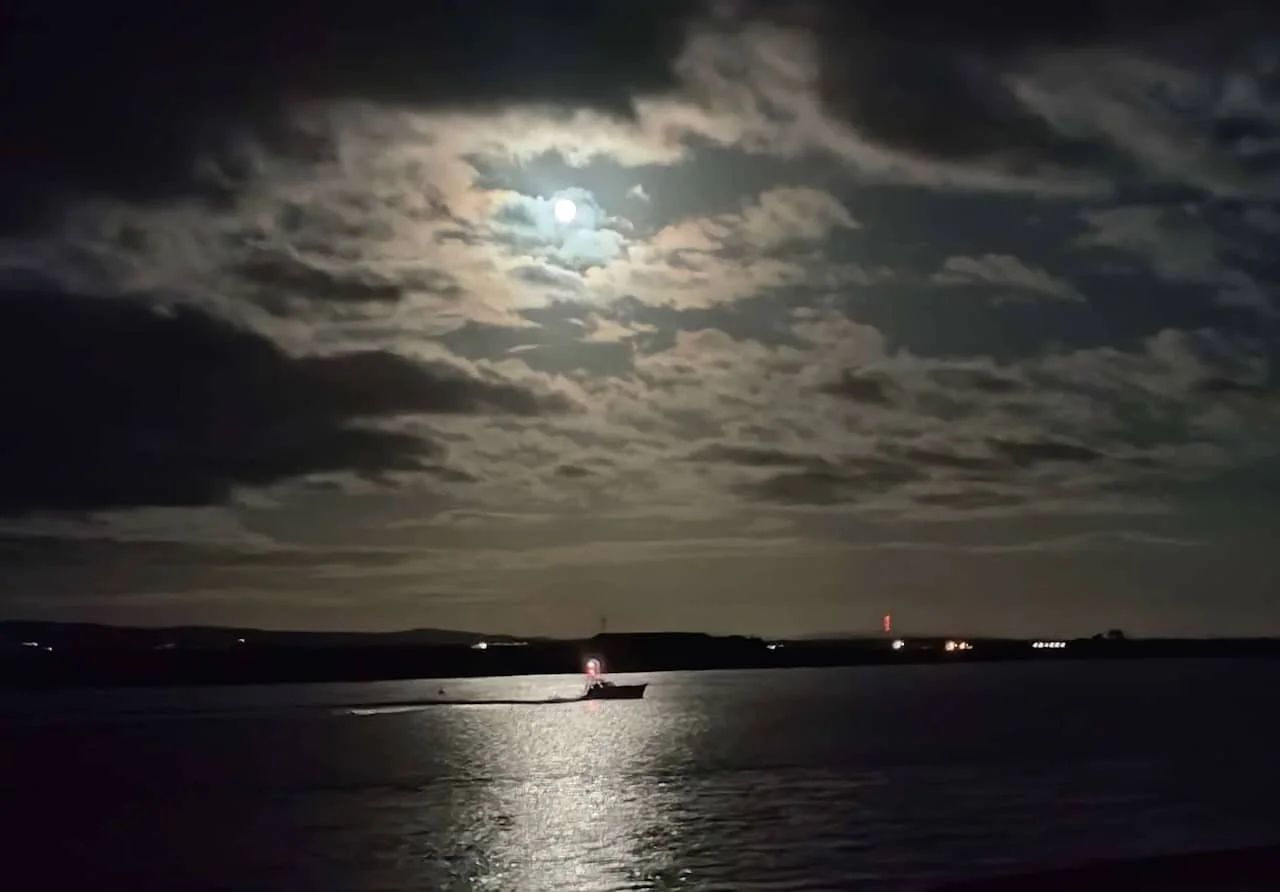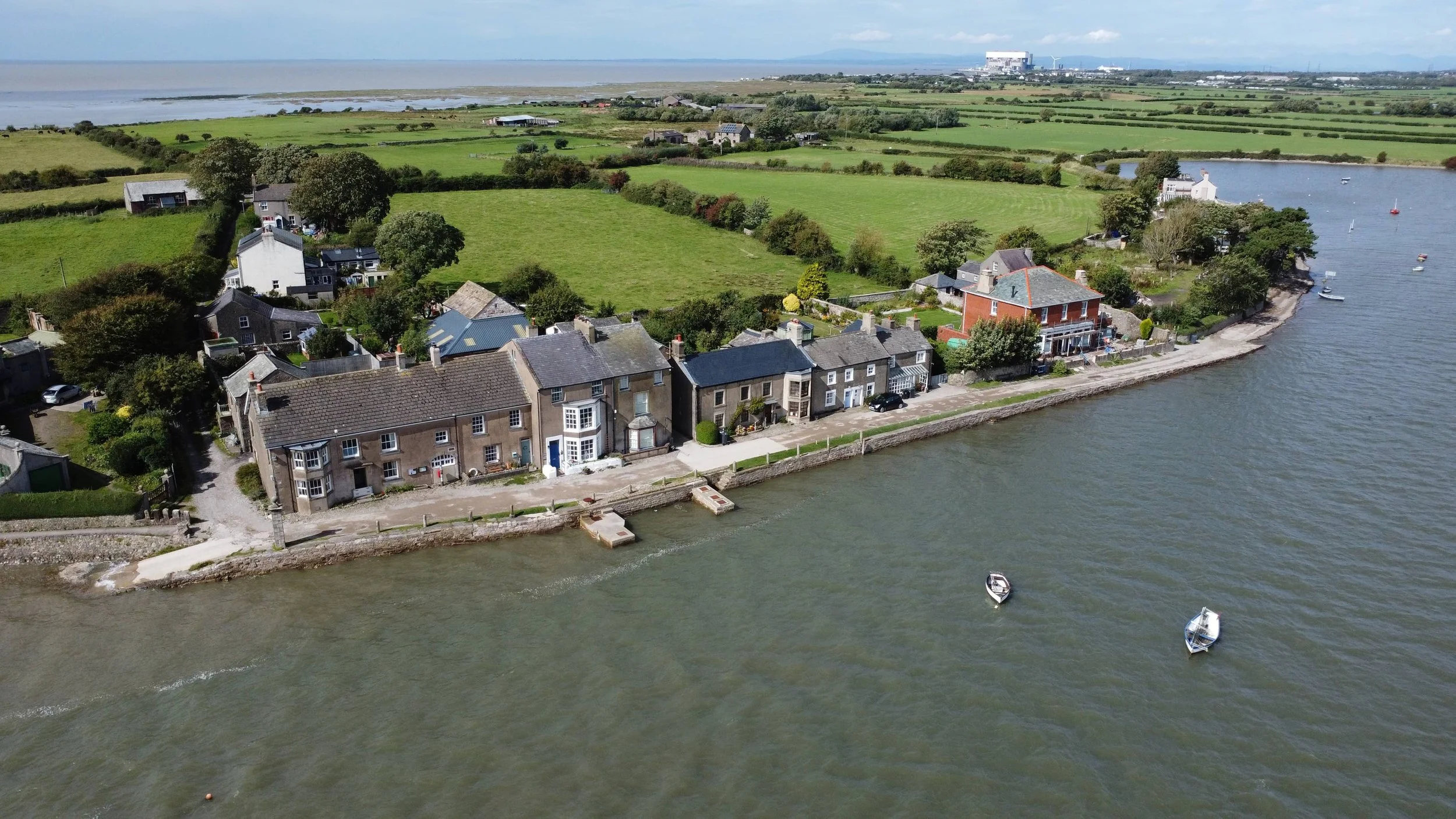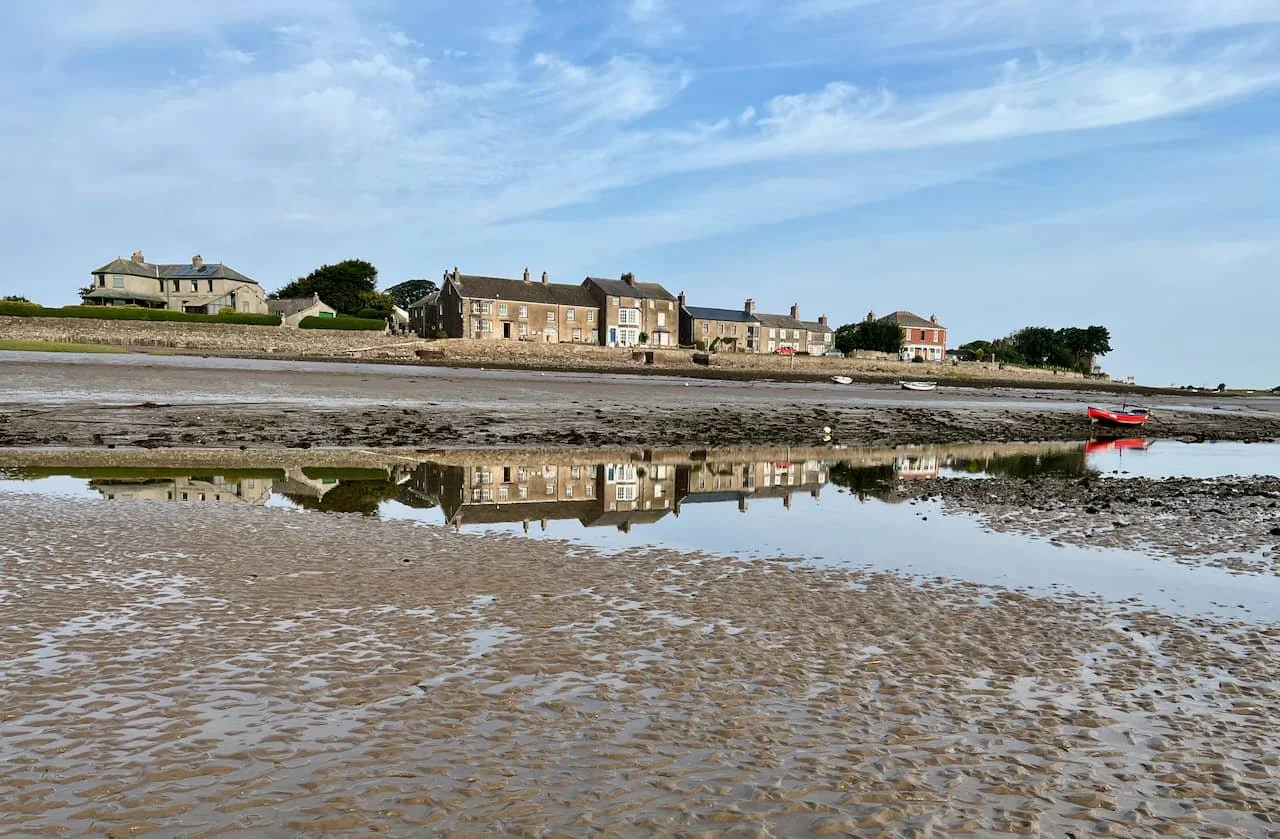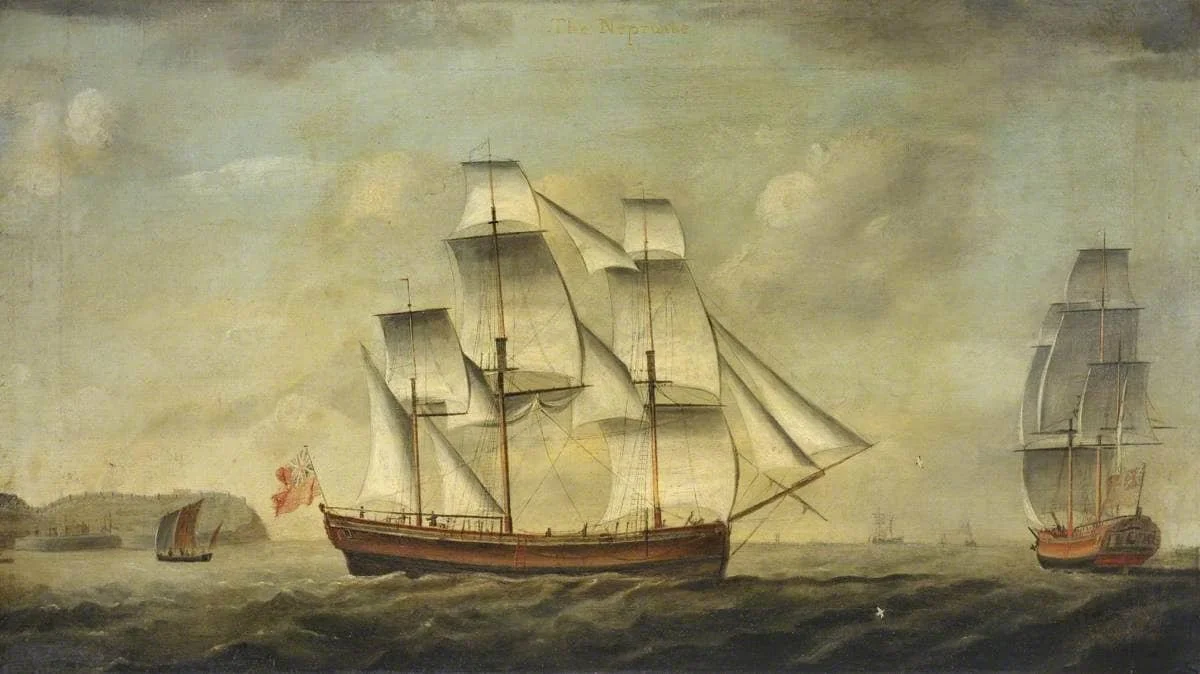From our Correspondents Two
Sunrise at SP: Website photo
Dorothy Calverley Postcards
Dorothy is well known to many of us. She is a member of the Townley family, and with her husband Ken, owned the Little House (number 5) for many years. Dorothy is the subject of a smashing biography by Scottie.
Very recently, she loaned us another set of photographs, mostly postcards (more later), like Donald last time, she also has a cracker of a photo of Peggy, the pilot boat.
Tom and Harold on board Peggy: Collection Dorothy Calverley.
And there is this photograph from her collection – a genuine, rare gem.
Fishermen on the First Terrace seat: From the collection of Dorothy Calverley.
We are fortunate to have many past photographs of the fisher folks taken by John Walker and George Gilchrist c1890 - 1920, and later in the 1930s (even if staged), the images by Sam Thompson.
This photo is dated 1925 and is a mixture of generations. They are surprisingly, not on seat at the top of the Lane, but on the seat between numbers 3 and 4 on First Terrace - and spilling over onto the grass. All are men, and all but one wears a hat, only one is unknown. The photographer is also unknown, but luckily the names have been written on the back.
They are from the left, Bert Smith, 24, living with his parents in Cotton Tree cottage, father, grandfather and great-grandfather to residents on the Point today.
Hubert Townley, 31, as well as fishing, he and his wife, Clara, also ran a shop and sub-post office from number 4 The Lane.
Arnold Townley, 25, younger brother to Hubert and father to Dorothy and her sister Iris. His wife Jessie ran a shop at number 16.
Richard Bagot, now aged 72, a river Pilot, lived for many years in number 4
William Townley, father of Hubert and Arnold, aged 62, living at number 6.
Charles Rowe – unknown to us.
James ‘Shirley’ Gardner, also a pilot, aged 56, living in the ‘Summer House’, number 5, The Lane
Captain Tom Gardner, a lieutenant in the Lancashire Fusiliers during the First World War, aged 42 and a relative of Shirley Gardner’s, lives in Gravel Cottage (number 2).
Tom Spencer, aged 68, also a river pilot, living in number 3, The Lane. He had built the semi-detached pair 2 and 3 with his father, James Spencer.
Postcards of Sunderland Point
In Dorothy’s album, there are lots of postcards, many of which we had not seen before. This one is special because it shows Arnold Townley, Dorothy’s father, replacing the leather on the part of the oar that sits in the rowlocks. Dorothy is sitting on the wall. The boy may be Dorothy’s cousin, but she’s not sure.
Arnold Townley repairing an oar: From the collection of Dorothy Calverley
It is a privately created card, possibly by Arnold himself, to sell in the shop at number 16 on Second Terrace.
The cards set us thinking, we do have many postcards, it would be a good idea to collect what we can, and put in a gallery on the website as an archive for any future use.
So, if you possess an SP postcard, especially one written by or sent to SP folk, we would be pleased to see it. Perhaps you have one like this? Or maybe not.
1940s holiday postard: Courtesy of the Postcard Museum
Maybe more like this one - if you have, send to editor@sunderlandpoint.net
Postcard of Second Terrace dated c1905, notice no Dolphin House or the porch and window at number 14, but the old entrance to what has since become the Reading Room is still in place.
An even older photograph
In Harold Gardner’s albums is this image, which dates to c1900
On Second Terrace c1900: Collection of Harold Gardner courtesy Rosemary Lawn.
Thankfully, Harold provides the names, from the left:
Thomas Hargreaves of Sunderland Brows farm.
Gerard Bagot, Dick Bagot’s son, both living at number 4.
William (Bill) Townley senior, father of William in the earlier photo. He lives in Hall End cottage – number 23.
John Thomas Bagot, a relative of Dick Bagot’s from Preesall.
Richard (Dick) Bagot
Arthur Townley, Bill Townley’s son, is recently married and living at Number 16.
William Page Atkinson Wells
We wrote about this great British painter who spent several summers at the Point in the early years of the 20th century. He lived on Second Terrace (in numbers 14 and later in number 13), where he not only created some of his paintings but also had some of them caught in the 1907 flood.
Here is a previously unseen painting, perhaps a sketch in oils, perhaps preparing for a larger work. It’s the two houses, numbers 18 and 19, as the light is falling.
“The Carriers House” by William Wells, c1907: Courtesy of the Gilchrist family.
It’s the only one we have seen where Wells paints an evening scene using the lamps in the house as a key source of light.
From census records, we see why he would have called it the ‘carrier’s house’. In 1891, number 18 was occupied by Robert Orr, who gave his occupation as ‘carrier and labourer’. Also living in the house was his grown-up niece, Ann Orr, who worked as a laundress.
In the 1901 census, only Ann is listed in the house, and she has become the ‘carrier’. The job would have involved transporting goods by horse cart, such as domestic provisions, collections from the railway, parcels for the post, and sometimes passengers. In 1907, Ann would have been 48. Wells would have known her as the ‘Carrier’. Perhaps it is Ann vaguely seen in the doorway.
Here is 18 and 19 today as evening approaches.
Numbers 18 and 19: Website collection
The Marine Cottage and Garden of James Williamson
(We hope) you will remember our article based around the marine garden James Williamson had planned for himself and his family when he bought Hall End House (number 22) in 1853. To jog the memory, here is the house today and Paul’s restoration of the drawing of the garden.
It’s the building to the left in the photo – not the Old Hall: From the website (Dec 1, 2024)
Anne Hinde, who had owned the property for many years, had recently died, and James bought it from her family. What has just come to us is an inventory of the furniture and the numerous household items that James acquired with the house.
It’s a small, red-covered booklet, printed and sold as ‘The useful memorandum book and almanack for 1853’.
James has written on the front cover.
Marine cottage, Sunderland, near Lancaster. The property of Jas. Williamson. Inventory of furniture, July 22, 1853.’
Here is the cover and first page.
Courtesy of the Gilchrist family
Each item, or group such as beds, cushions, tables and chairs, is given a value with totals at the bottom of each page and carried forward to the next page.
Over 500 items are listed under headings, Attic, Large back bedroom, Front bedroom, Dining room, Drawing room, Butler’s pantry, Entrance hall, Kitchen and Scullery, and Garden utensils.
It’s both fascinating and dull, an almost flawless handwritten list of the mundane items found in everyday life. As well as beds, tables, and chairs, there are chamber pots, pokers, tongs, and scuttles, flower stands, toasting forks, pie dishes, hair brushes, nail and tooth brushes.
We would like to have see the rocking chair with feather cushions and the Neapolitan ink stand.
In the final contract of sale, James pays £200 for the property, including consideration for some of the furniture and effects.
An error of identification.
We have made a mistake by identifying a photograph as William ‘Barney’ Dickinson. Wilton Atkinson wrote this in his album of images. Looking closely, it’s not. It’s James Spencer. We have placed two photos side by side as evidence.
An error of identification - it’s James Spencer.
Four Recent Photographs
From Philip Smith, a wonderful view of the Point from the river
Photo: Philip Smith
From Rachael, this dramatic image of the pilot boat heading downriver at night
Photo Rachael Knowles
Mark has taken this wonderful aerial photograph of First Terrace, basking in the Summer sun.
Photo: Mark Fletcher
And finally, this photograph of First Terrace from the shore, catching the reflection in the pool of water by Town Skear
Reflections of First Terrace: Website collection
Many thanks to the Gilchrist family, Dorothy Calverley, Philip Smith, Rachael Knowles, Mark Fletcher, and Alan Smith, who sent material, and helped with identifications
Next time, it will be either Little Brighton by the Sea or, if we finish in time, the navigation of the Lune in the 1730s.
A British mechant vessel of the 1760s by Holmann: Courtesy of the National Martime Museum
